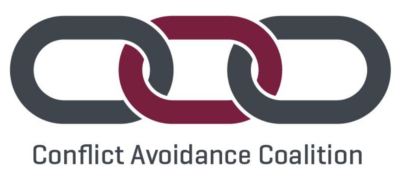 The Conflict Avoidance Pledge was conceived in 2017 at a meeting jointly arranged by the Royal Institution of Chartered Surveyors and the Institute of Civil Engineers.
The Conflict Avoidance Pledge was conceived in 2017 at a meeting jointly arranged by the Royal Institution of Chartered Surveyors and the Institute of Civil Engineers.
Senior executives and members from RICS and the ICE, along with representatives of four other professional bodies and two major infrastructure employers attended the meeting and formed a coalition. They had gathered at the ICE’s headquarters in central London to discuss how they could work in harmony to tackle the rising financial and resource costs of disputes in the construction industry – which would lead to the drafting of the Conflict Avoidance Pledge. Even before its successful launch in January 2018, Network Rail, Transport for London, and around forty contractors had signed up. Fast forward to 2024 and nearly 500 businesses of all sizes have now signed the pledge.
Each signatory expresses their support for collaborative working and the use of early intervention techniques to resolve differences before they become full blown disputes. Pledge signatories explicitly state their commitment to identify, control and manage potential problems and avoid getting embroiled in adversarial procedures.
The coalition has grown since it first came together in 2017. It is now comprised of around 70 businesses and organisations, all of whom are actively promoting and supporting the Pledge. The Pledge has also received official support from central and devolved governments across the UK and it is embedded in the Construction Playbook.
A Pledge Directory, maintained RICS, acts as a public roster of companies who have signed up to the initiative. There are three levels of commitment that pledge signatories commit to, and these are labelled “bronze”, “silver”, and “gold”. The three levels indicate the extent to which each pledge signatory has taken steps to give effect to their promise to avoid and manage conflict. Gold level is an indicator that a business has not just signed the Pledge but has informed and obtained buy-in from their internal management teams and external clients and has actively adopted conflict avoidance measures in their day-to-day operations.
For more information about the Pledge and to see who has signed it to date: www.rics.org/capledge.

